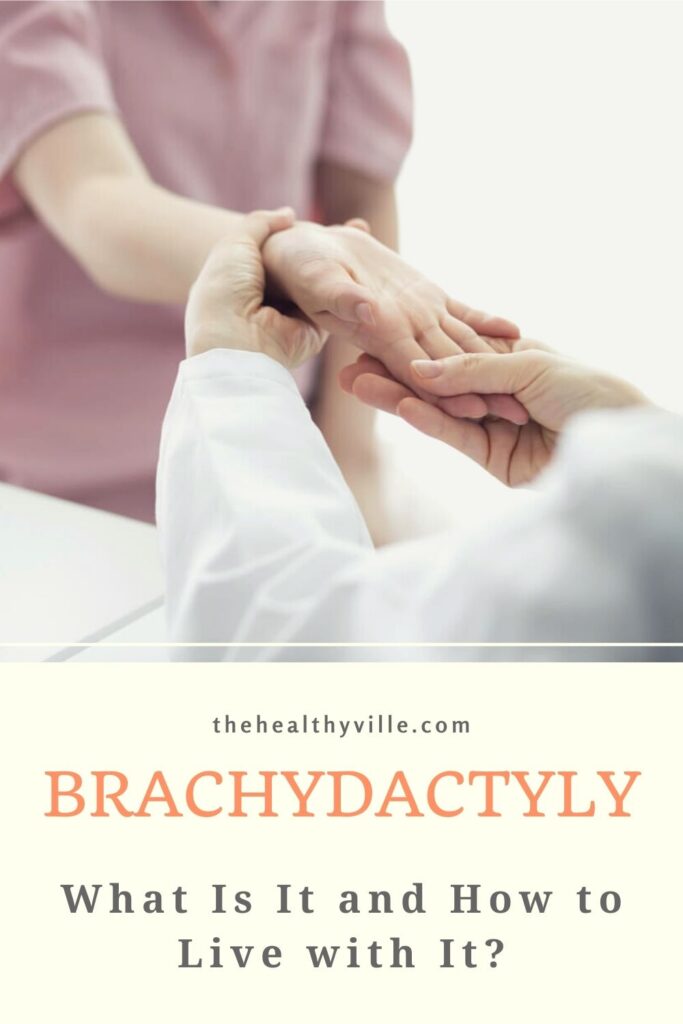Brachydactyly is a malformation of the fingers or toes. From a medical point of view it is not risky, but it does affect appearance.
Brachydactyly is an abnormality of the hands and feet. It is a hereditary condition in which one or more fingers are shorter than the others. It does not produce additional symptoms and does not require medical treatment as such.
Doctors usually discover it at birth. However, it is also possible to detect it during pregnancy. In any case, this malformation is very rare: it occurs in only 1 in every 2,500 births.
The most common is that it is not accompanied by other anatomical abnormalities. However, on some rare occasions there are other malformations of the fingers, such as syndactyly, polydactyly, limb reduction or symphalangia.
Causes of the anomaly
Brachydactyly has a genetic cause. It is common for this condition to be present in several members of the same family. It is an autosomal dominant condition. This means that it is enough that only one of the parents has the gene for the abnormality for it to be inherited.
The ingestion of some medications by the mother during pregnancy could affect the appearance. It is also possible that it is related to circulatory problems in the hands and feet of developing fetuses. Likewise, brachydactyly is sometimes a symptom of other more complex conditions, such as Down syndrome, Rubinstein-Taybi syndrome and achondroplasia.
Symptoms
The only visible symptom of brachydactyly is irregular length of the fingers and toes. This is present from the moment of birth, but sometimes doctors cannot detect it with the naked eye. However, as the child grows it becomes more apparent.
Types of brachydactyly
There are different types of brachydactyly, depending on the fingers and bones that are affected. From that point of view, the anomaly is classified into the following groups:
- A: when the middle phalanges are shortened, that is, the middle part of the fingers. If it affects all fingers it is called A1. In the index and pinky it would be A2. Only on the pinky is A3.
- B: when the end part of the little finger is shorter or does not exist. It takes place in both the hands and the feet. The usual thing is that the thumbs are complete, but split or flattened.
- C: affects the index, middle and little fingers. The middle phalanges are shorter. However, the ring finger remains intact.
- D: corresponds only to the thumbs, which have a shortening in the terminal part. It is one of the most common modalities.
- E: in this case the metacarpus and metatarsus, third and fourth, are shorter. These bones are found in the palm of the hand and on the midfoot, respectively.
Some more complex modalities
In some cases, brachydactyly is accompanied by other more complex conditions. Syndactyly is one of them and has to do with the presence of two or more fingers joined by a membrane partially or totally.
It is also possible that there is polydactyly or the presence of a greater number of fingers and toes. This affects 1 in 500 live births. Another simultaneous anomaly can be syphalangia, in which the finger joints have reduced or lack of mobility.
Finally, brachydactyly can also be accompanied by limb reduction. The hand or foot is smaller than normal. It is because there was no full formation of the limb during gestation.
How to treat it?
As we have already noted, brachydactyly as such does not require any medical treatment. In most cases it does not represent a limitation or hinder the performance of daily tasks or mobility. It also does not cause pain or other symptoms.
There are rare cases with functionality problems. For example, it can make it difficult to grasp objects or walk normally. If this occurs, doctors usually indicate physiotherapy as a way to improve the functionality and strength of the affected areas.
Likewise, it is possible to go to adaptation devices to correct the problem. You can also try plastic surgery, but doctors only indicate it for cases in which there is a dysfunction that is impossible to correct in other ways or for aesthetic reasons.
This type of surgery is very rare. When it is carried out, it is usual that several interventions are required. If the malformation is associated with another pathology, the evolution will depend on the global treatment.
Brachydactyly is more of an appearance problem
Most people with brachydactyly can live completely normal. Although the appearance of the hands or feet could generate certain inhibitions, from the point of view of physical health they do not have any disadvantage.
Read more: Osteoporosis Risk Factors and Ways to Prevent the Disease
Recommendations are that those with this anomaly receive psychological help. It is possible to learn to accept this physical condition and live with it without complexes, since you cannot solve it with a surgery.
Don’t forget to SHARE with your friends and family what you know about this abnormality on your social networks!

